


xxxxxAs we have seen (1853 Va), it was in 1866 that the English explorer and missionary David Livingstone (1813-73) undertook his last expedition into the African interior. Apart from his mission to spread Christianity and civilisation, he also aimed to confirm that Lake Victoria was indeed the source of the Nile, as claimed by the English explorer John Hanning Speke in 1862. Because of the difficult terrain, the hostility of some tribes, and troubles within his own party, he did not reach Ujiji on Lake Tanganyika until February 1869. By that time concern had grown about his welfare, and a rescue party was organised, led by the American journalist Henry Morton Stanley. While he journeyed to Africa, Livingstone explored westward. He reached Nyagwe on the River Lualaba, but by then he was exhausted and suffering badly from malaria and dysentery. He managed to return to Ujiji and it was here in November 1871 that Stanley found him, greeting him, we are told, with the famous words: “Doctor Livingstone I presume?” Food and medicine improved the health of the aged explorer, but he only made a partial recovery. He refused to return to England with Stanley and died a year later at Chief Chitambo’s village at Ilala. His heart was buried in African soil, but his body was conveyed to England and laid to rest in Westminster Abbey. No explorer before or since has travelled so extensively and for so long a time. He himself achieved little in the way of missionary work or the abolition of the slave trade, but his Christian example, his dramatic rescue, and the manner of his death opened Africa to many Church missions and traders and, to a large extent, these accomplished what had sought to achieve in the continent he loved and served for so long.
“DOCTOR LIVINGSTONE I PRESUME?”
- NOVEMBER 1871 (Vb)
Acknowledgements
Livingstone, detail of life-size bronze statue overlooking the Victoria Falls in Zimbabwe. Map (Southern Africa): A Compton’s Map (detail) – licensed under Creative Commons via robinsonlibrary.com/history/africa/southern. Meeting: date and artist unknown – Royal Geographical Society, London. Chitambo: date and photographer unknown. Stanley: based on a photograph by the London Stereoscopic Company, date unknown. Central Africa: engraving by the French artist Emile-Antoine Bayard (1837-1891), 1878 – private collection. Map (The Congo): licensed under Creative Commons – www.thefullwiki.org/Democratic_Republic_of_the_Congo. Mountains of the Moon: date and photographer unknown. Map (The Congo): declared to be in the public domain – commons.wikimedia.org/wiki/File:Congo. Przhevalski: colour lithograph, date and artist unknown. Horse: date and artist unknown.
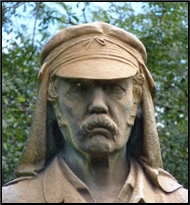 xxxxxAs we have seen (1853 Va), it was in 1866 that the English explorer and missionary David Livingstone (1813-73) started out on his last expedition into the African interior. As in his previous journeys of exploration in both southern and central Africa, his aim was to spread what he called his “trinity” - Christianity, commerce and civilisation. But on this occasion he had an additional goal - to try to confirm that Lake Victoria was indeed the source of the Nile, as claimed by the English explorer John Hanning Speke in 1862 (and subsequently contested by his fellow explorer Richard Burton).
xxxxxAs we have seen (1853 Va), it was in 1866 that the English explorer and missionary David Livingstone (1813-73) started out on his last expedition into the African interior. As in his previous journeys of exploration in both southern and central Africa, his aim was to spread what he called his “trinity” - Christianity, commerce and civilisation. But on this occasion he had an additional goal - to try to confirm that Lake Victoria was indeed the source of the Nile, as claimed by the English explorer John Hanning Speke in 1862 (and subsequently contested by his fellow explorer Richard Burton).
xxxxxWith financial support from his many friends and admirers, Livingstone returned to Africa at the end of January. Starting from Mikindani on the east coast (the orange route on the map) he planned to reach Lake Tanganyika by skirting around Lake Nyasa to the north, but because of raids from the Ngoni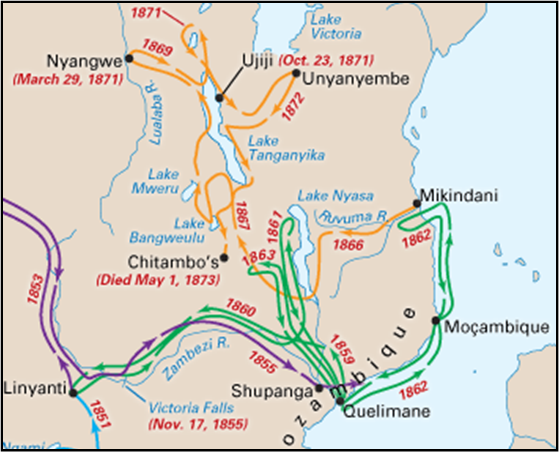 Zulus he was forced to take a longer, more arduous southern route via Portuguese territory. The going was tough, there were attacks from hostile tribes, and, as in previous expeditions, he found it difficult to cope when trouble broke out among members of his party, some thirty in number. Travelling along the Rovuma River for part of the way, and assisted by Arab traders, he eventually reached Ujiji, a trading post on Lake Tanganyika, in February 1869, having discovered Lakes Mweru and Bangweulu en route. By then, however, a large number of his entourage had deserted him and, on returning to Zanzibar, had attempted to conceal their desertion by announcing that he had been killed by Ngoni warriors.
Zulus he was forced to take a longer, more arduous southern route via Portuguese territory. The going was tough, there were attacks from hostile tribes, and, as in previous expeditions, he found it difficult to cope when trouble broke out among members of his party, some thirty in number. Travelling along the Rovuma River for part of the way, and assisted by Arab traders, he eventually reached Ujiji, a trading post on Lake Tanganyika, in February 1869, having discovered Lakes Mweru and Bangweulu en route. By then, however, a large number of his entourage had deserted him and, on returning to Zanzibar, had attempted to conceal their desertion by announcing that he had been killed by Ngoni warriors.
xxxxxThis report was later discounted, but in view of the time which had elapsed since his departure, international concern was rapidly growing as to the welfare of the intrepid and aged explorer. In 1869 a rescue mission was organised by the New York Herald, led by the Welsh-American journalist Henry Morton Stanley. He eventually reached Zanzibar in January 1871 and, having assembled a well-equipped exploring party, moved inland two months later. In the meantime, Livingstone, despite being seriously ill, had begun to explore the troubled region of Manyuema to the west of Lake Tanganyika. (The orange route on the map above.) Despite meeting a deal of hostility, in March 1871 he managed 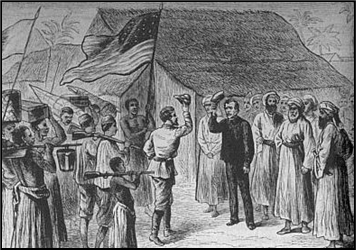 to reach Nyangwe on Lualaba River, the first European to do so. However, exhausted by the journey through the dense terrain and near to complete collapse, he was then forced to turn back, reaching Ujiji towards the end of October. It was here that he was found by the rescue party the following month. According to his own account of this historic meeting, Stanley greeted him with the words “Dr Livingstone I presume?”, and in reply Livingstone lifted his cap slightly, gave a “kind smile”, and said “Yes”. Over the next four months they became firm friends.
to reach Nyangwe on Lualaba River, the first European to do so. However, exhausted by the journey through the dense terrain and near to complete collapse, he was then forced to turn back, reaching Ujiji towards the end of October. It was here that he was found by the rescue party the following month. According to his own account of this historic meeting, Stanley greeted him with the words “Dr Livingstone I presume?”, and in reply Livingstone lifted his cap slightly, gave a “kind smile”, and said “Yes”. Over the next four months they became firm friends.
xxxxxThe timely arrival of the rescue party, providing as it did much needed food and medicine, clearly saved Livingstone’s life. Indeed, within a matter of weeks he felt strong enough to join Stanley in exploring the northern end of Lake Tanganyika, and then travelling to the Arab settlement of Unyanyembe, some 200 miles to the east. Determined to finish his work, however, he then insisted on remaining in Africa. When Stanley left for England in March 1872, he continued his search to find the source of the Nile. But he remained a very sick man. Worn out by his exertions and suffering from malaria, dysentery and ulcerated feet, he survived for little more than a year. He died in April 1873 soon after reaching Chief Chitambo’s village at Ilala, south-east of lake Bagweulu. He was found dead, kneeling by his bedside as if in prayer. His two faithful servants, Sussi and Chuma had his heart buried beneath a nearby mvula tree, and then his embalmed body was carried overland to Zanzibar, a hazardous journey of some 1,000 miles. From there it was conveyed to England and buried in Westminster Abbey amid great ceremony. Among the hundreds of tributes he received was one of “respect and admiration” from Queen Victoria. And appropriately enough, The Last Journals of David Livingstone were published in the same year, the account of his final expedition having been sent to England in a water-tight box.
xxxxxLivingston clearly ranks as one of the world’s greatest explorers. No one, before or since, has travelled so extensively, nor faced the same degree of hardship and danger. During more than thirty years of exploration he journeyed over one third of the African continent, from the Cape to the Equator, and from the Atlantic to the Indian Ocean. And in so doing he provided, by his maps and carefully maintained journals, a wealth of knowledge about the geography and social make-up of this vast region, much of it previously unexplored.
xxxxxIt is doubtless true that Livingstone lacked the skills required of an expeditionary leader, proving unable to maintain command and making unwise decisions. His Zambezi expedition of 1858 to 1863 was particularly disastrous in that respect. Nor, apart from the example he set to those close to him, did he achieve a great deal in his work as a missionary or in his fervent desire to put an end to the slave trade. However, his true value as a dedicated, courageous Christian lay not in what he achieved personally, but on the impact his labours had on the Western World at large. His selfless life, his dramatic rescue, and the manner of his death proved an inspiration to others, and within a very short time was to bring to Africa an army of missionaries from all denominations, as well as many traders. This brought the Gospel to the heathen, and, given time, an end to that traffic in human life that he so abhorred. He threw much light upon the “Dark Continent”, and that was the true measure of his achievement.

xxxxxIncidentally, in Chitambo village the time and place of Livingstone’s death are recorded on a stone memorial, erected in 1902. This was placed under a mvula tree near where his native followers had buried his heart in May 1873. ……
xxxxx…… Many places across the world are named after Livingstone. These include the town of Livingstone, close to Lake Victoria, the Livingstone Falls on the Congo River, and the long mountain range at the northern end of Lake Nyasa (sometimes known as Lake Malawi). ……
xxxxx…… Unfortunately, there remains some doubt as to whether Stanley actually said those famous words “Doctor Livingstone I presume?”. He recorded such in his subsequent account of the meeting, but it was later discovered that the page covering that particular event in his day-to-day diary had been torn out. ……
xxxxx…… In 1929 the block of tenements in Blantyre, Scotland, where Livingstone was brought up, was scheduled for demolition. It was saved by public subscription and is now a museum dedicated to his life and work.
Including:
Henry Morton Stanley,
Pierre de Brazza,
Gustav Nachtigal, and
Nikolai Przhevalski

Vb-1862-1880-Vb-1862-1880-Vb-1862-1880-Vb-1862-1880-Vb-1862-1880-Vb-1862-1880-Vb
xxxxxHenry Morton Stanley (1841-1904), the man who found David Livingstone and saved his life, was born in Wales, but at the age of 18 worked his passage to New Orleans in the United States. After taking part in the Civil War, he became a journalist and, as a special correspondent for the New York Herald, covered a war in Ethiopia in 1868. The following year his editor chose him to journey to Africa and find David Livingstone “at any cost”. As we have seen, he did just that in November 1871, and when Livingstone died he resolved to continue the explorer’s work. In a series of expeditions over the next 25 years he proved that Lake Victoria was, indeed, the source of the Nile, traced the Congo to the Atlantic and, on behalf of the King of Belgium, opened up a vast area of land in the Congo Basin - the beginning of the Congo Free State. He lived the last fifteen years of his life in England, where he served as a Member of Parliament and was knighted in 1899. His major works were How I Found Livingstone, Through the Dark Continent and In Darkest Africa. A man of immense courage and determination, he opened up the Congo Region and East Africa for colonization, but he was later accused of cruelty towards his African workers, and of exploiting the natural resources of the areas he discovered.
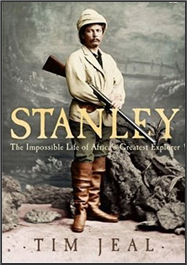 xxxxxHenry Morton Stanley, the man who found David Livingstone and saved his life, was born John Rowlands in Denbigh, North Wales, in 1841. Most of his childhood was spent in an orphanage but, being rebellious and resourceful by nature, he eventually ran away and took up a variety of odd jobs. He finally became a ship’s cabin boy and worked his passage to New Orleans in the United States. After taking part in the Civil War - during which he had the distinction of fighting on both sides - he decided to become a journalist. For this new career he took on the name of Henry Stanley in gratitude to a wealthy cotton merchant, one Henry Hope Stanley, who had given him employment and befriended him on his arrival in New Orleans.
xxxxxHenry Morton Stanley, the man who found David Livingstone and saved his life, was born John Rowlands in Denbigh, North Wales, in 1841. Most of his childhood was spent in an orphanage but, being rebellious and resourceful by nature, he eventually ran away and took up a variety of odd jobs. He finally became a ship’s cabin boy and worked his passage to New Orleans in the United States. After taking part in the Civil War - during which he had the distinction of fighting on both sides - he decided to become a journalist. For this new career he took on the name of Henry Stanley in gratitude to a wealthy cotton merchant, one Henry Hope Stanley, who had given him employment and befriended him on his arrival in New Orleans.
xxxxxA confident, brash young man, he did well in his new profession and in 1868, as special correspondent for the New York Herald, reported on a war then being waged by the British in Ethiopia. On the strength of this and other consignments in the Middle East, in 1869 he was chosen by his editor, James Gordon Bennett, to journey to Africa and “find Livingstone at any cost”. Although the expedition he mounted on arriving at Zanzibar in January 1871 was well equipped, the journey into the interior proved something of a nightmare. His caravan was attacked on a number of occasions, and many of his 200 bearers deserted or died from sickness. As we have seen, however, he eventually found the intrepid doctor in the little village of Ujiji deep in the heart of Africa. It was a scoop of a lifetime but, in fact, he did not remain long in journalism after returning to America. He reported on the British campaign against the Ashanti in West Africa in 1873, but, on learning of Livingstone’s death, he felt compelled to take up the task left unfinished by the great explorer. He wrote later: “Suddenly I felt inflamed with a decision to take up Livingstone’s work”.
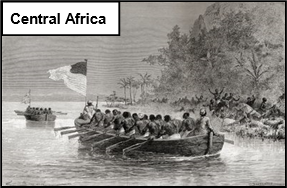 xxxxxOver the next twenty-five years, backed financially by the New York Herald, the London Daily Telegraph, and, later, the King of Belgium, he made four daring expeditions into the African interior and played a major part in the exploration and, as it proved, the colonization of this huge continent. During the mid-1870s he circumnavigated Lake Victoria, finally proving that this vast expanse of water was indeed the source of the Nile, and then, like Livingstone before him, journeyed westward to reach the Lualaba River. Over the next nine, arduous months he proved that this river was, in fact, a tributary of the Congo. Sailing aboard a collapsible boat, the Lady Alice, he navigated the river as far downstream as a series of cataracts
xxxxxOver the next twenty-five years, backed financially by the New York Herald, the London Daily Telegraph, and, later, the King of Belgium, he made four daring expeditions into the African interior and played a major part in the exploration and, as it proved, the colonization of this huge continent. During the mid-1870s he circumnavigated Lake Victoria, finally proving that this vast expanse of water was indeed the source of the Nile, and then, like Livingstone before him, journeyed westward to reach the Lualaba River. Over the next nine, arduous months he proved that this river was, in fact, a tributary of the Congo. Sailing aboard a collapsible boat, the Lady Alice, he navigated the river as far downstream as a series of cataracts 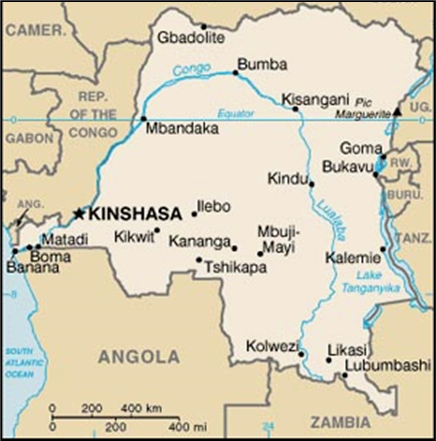 (which he named the Livingstone Falls), and then completed the journey on foot, reaching the Atlantic Ocean in August 1877. It was a magnificent journey of discovery, but it came at a price. Plagued by disease and attacks from hostile tribes, he lost nearly half of his party, originally around 350.
(which he named the Livingstone Falls), and then completed the journey on foot, reaching the Atlantic Ocean in August 1877. It was a magnificent journey of discovery, but it came at a price. Plagued by disease and attacks from hostile tribes, he lost nearly half of his party, originally around 350.
xxxxxHe returned to the Congo in 1879, this time sponsored by Leopold II, King of Belgium, who was anxious to own an African kingdom. He built a road from the lower Congo to Stanley Pool (now called Malebo Pool), and established a number of trading stations, including the town of Leopoldville (modern Kinshasa). These settlements, situated on the south bank of the river, formed the beginning of the Congo Free State, a vast area ruled over and ruthlessly exploited by Leopold until 1908 - known today as the Democratic Republic of the Congo (here illustrated).
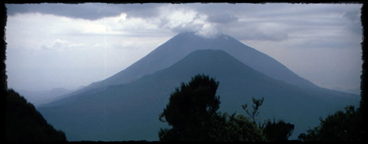 xxxxxThenxin 1888 Stanley led another successful rescue mission, this time to bring to safety the German explorer and diplomat Emin Pasha (1840-1892), allegedly surrounded by rebel, Mahdist forces in the Upper Sudan. It was during this expedition that he discovered that Lake Albert was linked to Lake Edward by the Semliki River, and he saw, between the two lakes, the Ruwenzori Range - the fabled “Mountains of the Moon” (illustrated), which, since the time of the Greek geographer Ptolemy (c100-c170) had been regarded as the source of the Nile.
xxxxxThenxin 1888 Stanley led another successful rescue mission, this time to bring to safety the German explorer and diplomat Emin Pasha (1840-1892), allegedly surrounded by rebel, Mahdist forces in the Upper Sudan. It was during this expedition that he discovered that Lake Albert was linked to Lake Edward by the Semliki River, and he saw, between the two lakes, the Ruwenzori Range - the fabled “Mountains of the Moon” (illustrated), which, since the time of the Greek geographer Ptolemy (c100-c170) had been regarded as the source of the Nile.
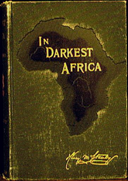
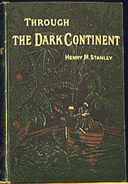 xxxxxStanley lived the last fifteen years of his life in England, but spent some time on worldwide lecture tours. He was elected to Parliament in 1895, serving for five years, and was knighted in 1899. Among his writings were How I found Livingstone, Through the Dark Continent, and In Darkest Africa. His extensive exploration in the Congo Basin and parts of East Africa, during which he showed immense courage and firm leadership, opened up these areas to colonization. By confirming that Lake Victoria was, indeed, the source of the Nile he fulfilled Livingstone’s aim as an explorer, but he did attract a great deal of criticism for the brutality he showed towards the African people - particularly those in his service - and in that respect he clearly differed from the man in whose footsteps he followed. He died in May 1904 and was buried in the graveyard of St. Michael’s Church in Pirbright, Surrey.
xxxxxStanley lived the last fifteen years of his life in England, but spent some time on worldwide lecture tours. He was elected to Parliament in 1895, serving for five years, and was knighted in 1899. Among his writings were How I found Livingstone, Through the Dark Continent, and In Darkest Africa. His extensive exploration in the Congo Basin and parts of East Africa, during which he showed immense courage and firm leadership, opened up these areas to colonization. By confirming that Lake Victoria was, indeed, the source of the Nile he fulfilled Livingstone’s aim as an explorer, but he did attract a great deal of criticism for the brutality he showed towards the African people - particularly those in his service - and in that respect he clearly differed from the man in whose footsteps he followed. He died in May 1904 and was buried in the graveyard of St. Michael’s Church in Pirbright, Surrey.
xxxxxIncidentally, the outbreak of disputes between European powers over claims to African territory - the so-called “Scramble for Africa” - led to the convening of the Berlin Conference in 1884 (Vc). As we shall see, this international gathering, sparked off by the opening up of the Congo River Basin, took on the formidable task of regulating the colonization of this enormous continent. ……
xxxxx…… The war in Ethiopia (the Anglo-Abyssinian War) which Stanley attended as a newspaper correspondent in 1868 was fought by the British against the Christian Emperor Tewodros II (c1818-1868). He had united the country after coming to power in 1855, but having failed to receive help from Queen Victoria against his Moslem enemies to the north - the Ottoman Empire and Egypt - he imprisoned the British consul and all British subjects. After a mission to the Emperor had failed to gain their release, an army was sent under General Robert Napier and this resulted in the defeat of the Ethiopian army at the Battles of Arogye and Magdala in April 1868, and the capture and sacking of Magdala. Rather than surrender, Tewodros (known to the British as Theodore) committed suicide. Today, he is regarded highly by Ethiopians as the man who united their country and began its modernisation. As we shall see, his work was continued later by Menelik II (ruler 1889-1913), the emperor who defeated the Italians at the Battle of Adowa in 1896 (Vc).
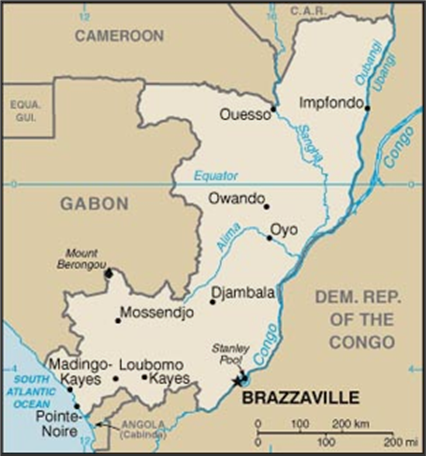 xxxxxAnother explorer at work in the Congo region at this time was the Italian born Frenchman Pierre de Brazza (1852-1905). He was responsible for the founding of the French Congo. During two expeditions in the late 1870s and the early 1880s he travelled deep into the Congo River Basin, gaining land concessions by negotiation and barter. By 1882 he had established over 20 trading stations - including the settlement named after him, Brazzaville - and these were scattered over an area of some 200,000 square miles to the north of the Congo River. He was later appointed governor of the French dependency, serving from 1886 to 1898. He died of a fever while at Dakar, but in 2006 his remains and those of his wife and four children were re-interred in a mausoleum in Brazzaville, despite allegations that he had destroyed and plundered villages during his expeditions and raped a Congolese woman. Today the territory is known as the Republic of the Congo (here illustrated).
xxxxxAnother explorer at work in the Congo region at this time was the Italian born Frenchman Pierre de Brazza (1852-1905). He was responsible for the founding of the French Congo. During two expeditions in the late 1870s and the early 1880s he travelled deep into the Congo River Basin, gaining land concessions by negotiation and barter. By 1882 he had established over 20 trading stations - including the settlement named after him, Brazzaville - and these were scattered over an area of some 200,000 square miles to the north of the Congo River. He was later appointed governor of the French dependency, serving from 1886 to 1898. He died of a fever while at Dakar, but in 2006 his remains and those of his wife and four children were re-interred in a mausoleum in Brazzaville, despite allegations that he had destroyed and plundered villages during his expeditions and raped a Congolese woman. Today the territory is known as the Republic of the Congo (here illustrated).
xxxxxTwo other explorers of this period need to be mentioned. In 1869 the German military surgeon Gustav Nachtigal (1834-1885) was sent by his government on a mission to the kingdom of Kanem-Bornu north-east of Lake Chad in west-central Africa. He left from Tripoli in Libya and, travelling south across the Sahara, journeyed over the unexplored territories of Tibesti and Borku before reaching his destination. At one stage he was thought to have perished en route, but he eventually reached Khartoum towards the end of 1874. He wrote of his travels in his Sahara und Sudan. Then in 1884, after serving as a diplomat in Tunisia, he was sent to West Africa by the German Chancellor Otto von Bismarck. There he was instrumental in gaining the annexation of Togoland and the Cameroons for the German colonial empire. He died at sea during his return journey.
 xxxxxMeanwhile the Russian Nikolai Przhevalski (1839-1888) spent ten arduous years exploring the mountains and arid deserts of Central Asia. During the 1870s and 1880s he explored Mongolia and Turkestan, and mapped parts of the upper Hwang-Ho and Yangtze rivers in China. He also made three journeys into Tibet but failed to reach the capital Lhasa, prevented by the onset of winter or opposition from the Tibetan military. During his travels, he crossed the Gobi Desert, explored the Kuen Lun mountain range, and visited Issyk Kul in
xxxxxMeanwhile the Russian Nikolai Przhevalski (1839-1888) spent ten arduous years exploring the mountains and arid deserts of Central Asia. During the 1870s and 1880s he explored Mongolia and Turkestan, and mapped parts of the upper Hwang-Ho and Yangtze rivers in China. He also made three journeys into Tibet but failed to reach the capital Lhasa, prevented by the onset of winter or opposition from the Tibetan military. During his travels, he crossed the Gobi Desert, explored the Kuen Lun mountain range, and visited Issyk Kul in 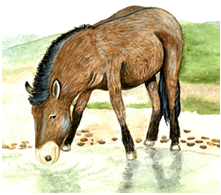 the Tian Shan Mountains, one of the largest mountain lakes in the world. It was near this lake that he died of typhoid. A large cross was erected there in his memory, and the town of Karakol was renamed Przhevalsk (though it reverted to Karakol in 1991). During his journeys he amassed a large collection of plants and animals, the latter collection including a wild camel and the only surviving species of a wild horse, now known by his name.
the Tian Shan Mountains, one of the largest mountain lakes in the world. It was near this lake that he died of typhoid. A large cross was erected there in his memory, and the town of Karakol was renamed Przhevalsk (though it reverted to Karakol in 1991). During his journeys he amassed a large collection of plants and animals, the latter collection including a wild camel and the only surviving species of a wild horse, now known by his name.






 xxxxxAs we have seen (1853 Va), it was in 1866 that the English explorer and missionary David Livingstone (1813-
xxxxxAs we have seen (1853 Va), it was in 1866 that the English explorer and missionary David Livingstone (1813- Zulus he was forced to take a longer, more arduous southern route via Portuguese territory. The going was tough, there were attacks from hostile tribes, and, as in previous expeditions, he found it difficult to cope when trouble broke out among members of his party, some thirty in number. Travelling along the Rovuma River for part of the way, and assisted by Arab traders, he eventually reached Ujiji, a trading post on Lake Tanganyika, in February 1869, having discovered Lakes Mweru and Bangweulu en route. By then, however, a large number of his entourage had deserted him and, on returning to Zanzibar, had attempted to conceal their desertion by announcing that he had been killed by Ngoni warriors.
Zulus he was forced to take a longer, more arduous southern route via Portuguese territory. The going was tough, there were attacks from hostile tribes, and, as in previous expeditions, he found it difficult to cope when trouble broke out among members of his party, some thirty in number. Travelling along the Rovuma River for part of the way, and assisted by Arab traders, he eventually reached Ujiji, a trading post on Lake Tanganyika, in February 1869, having discovered Lakes Mweru and Bangweulu en route. By then, however, a large number of his entourage had deserted him and, on returning to Zanzibar, had attempted to conceal their desertion by announcing that he had been killed by Ngoni warriors. to reach Nyangwe on Lualaba River, the first European to do so. However, exhausted by the journey through the dense terrain and near to complete collapse, he was then forced to turn back, reaching Ujiji towards the end of October. It was here that he was found by the rescue party the following month. According to his own account of this historic meeting, Stanley greeted him with the words “Dr Livingstone I presume?”, and in reply Livingstone lifted his cap slightly, gave a “kind smile”, and said “Yes”. Over the next four months they became firm friends.
to reach Nyangwe on Lualaba River, the first European to do so. However, exhausted by the journey through the dense terrain and near to complete collapse, he was then forced to turn back, reaching Ujiji towards the end of October. It was here that he was found by the rescue party the following month. According to his own account of this historic meeting, Stanley greeted him with the words “Dr Livingstone I presume?”, and in reply Livingstone lifted his cap slightly, gave a “kind smile”, and said “Yes”. Over the next four months they became firm friends.

 xxxxxHenry Morton Stanley, the man who found David Livingstone and saved his life, was born John Rowlands in Denbigh, North Wales, in 1841. Most of his childhood was spent in an orphanage but, being rebellious and resourceful by nature, he eventually ran away and took up a variety of odd jobs. He finally became a ship’s cabin boy and worked his passage to New Orleans in the United States. After taking part in the Civil War -
xxxxxHenry Morton Stanley, the man who found David Livingstone and saved his life, was born John Rowlands in Denbigh, North Wales, in 1841. Most of his childhood was spent in an orphanage but, being rebellious and resourceful by nature, he eventually ran away and took up a variety of odd jobs. He finally became a ship’s cabin boy and worked his passage to New Orleans in the United States. After taking part in the Civil War - xxxxxOver the next twenty-
xxxxxOver the next twenty- (which he named the Livingstone Falls), and then completed the journey on foot, reaching the Atlantic Ocean in August 1877. It was a magnificent journey of discovery, but it came at a price. Plagued by disease and attacks from hostile tribes, he lost nearly half of his party, originally around 350.
(which he named the Livingstone Falls), and then completed the journey on foot, reaching the Atlantic Ocean in August 1877. It was a magnificent journey of discovery, but it came at a price. Plagued by disease and attacks from hostile tribes, he lost nearly half of his party, originally around 350. xxxxxThenxin 1888 Stanley led another successful rescue mission, this time to bring to safety the German explorer and diplomat Emin Pasha (1840-
xxxxxThenxin 1888 Stanley led another successful rescue mission, this time to bring to safety the German explorer and diplomat Emin Pasha (1840-
 xxxxxStanley lived the last fifteen years of his life in England, but spent some time on worldwide lecture tours. He was elected to Parliament in 1895, serving for five years, and was knighted in 1899. Among his writings were How I found Livingstone, Through the Dark Continent, and In Darkest Africa. His extensive exploration in the Congo Basin and parts of East Africa, during which he showed immense courage and firm leadership, opened up these areas to colonization. By confirming that Lake Victoria was, indeed, the source of the Nile he fulfilled Livingstone’s aim as an explorer, but he did attract a great deal of criticism for the brutality he showed towards the African people -
xxxxxStanley lived the last fifteen years of his life in England, but spent some time on worldwide lecture tours. He was elected to Parliament in 1895, serving for five years, and was knighted in 1899. Among his writings were How I found Livingstone, Through the Dark Continent, and In Darkest Africa. His extensive exploration in the Congo Basin and parts of East Africa, during which he showed immense courage and firm leadership, opened up these areas to colonization. By confirming that Lake Victoria was, indeed, the source of the Nile he fulfilled Livingstone’s aim as an explorer, but he did attract a great deal of criticism for the brutality he showed towards the African people - xxxxxAnother explorer at work in the Congo region at this time was the Italian born Frenchman Pierre de Brazza (1852-
xxxxxAnother explorer at work in the Congo region at this time was the Italian born Frenchman Pierre de Brazza (1852- xxxxxMeanwhile the Russian Nikolai Przhevalski (1839-
xxxxxMeanwhile the Russian Nikolai Przhevalski (1839- the Tian Shan Mountains, one of the largest mountain lakes in the world. It was near this lake that he died of typhoid. A large cross was erected there in his memory, and the town of Karakol was renamed Przhevalsk (though it reverted to Karakol in 1991). During his journeys he amassed a large collection of plants and animals, the latter collection including a wild camel and the only surviving species of a wild horse, now known by his name.
the Tian Shan Mountains, one of the largest mountain lakes in the world. It was near this lake that he died of typhoid. A large cross was erected there in his memory, and the town of Karakol was renamed Przhevalsk (though it reverted to Karakol in 1991). During his journeys he amassed a large collection of plants and animals, the latter collection including a wild camel and the only surviving species of a wild horse, now known by his name.

